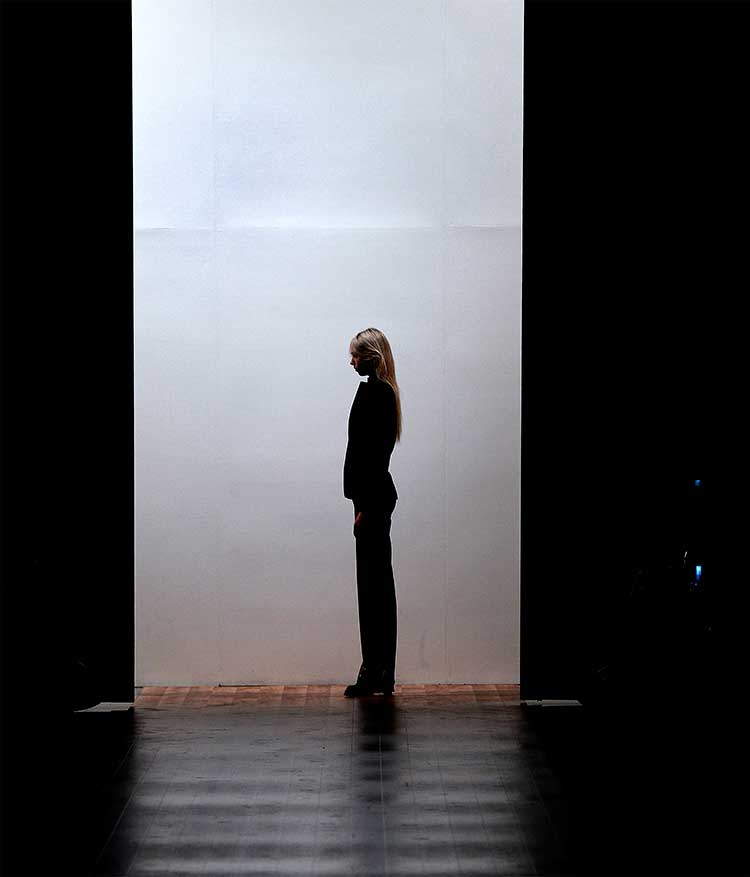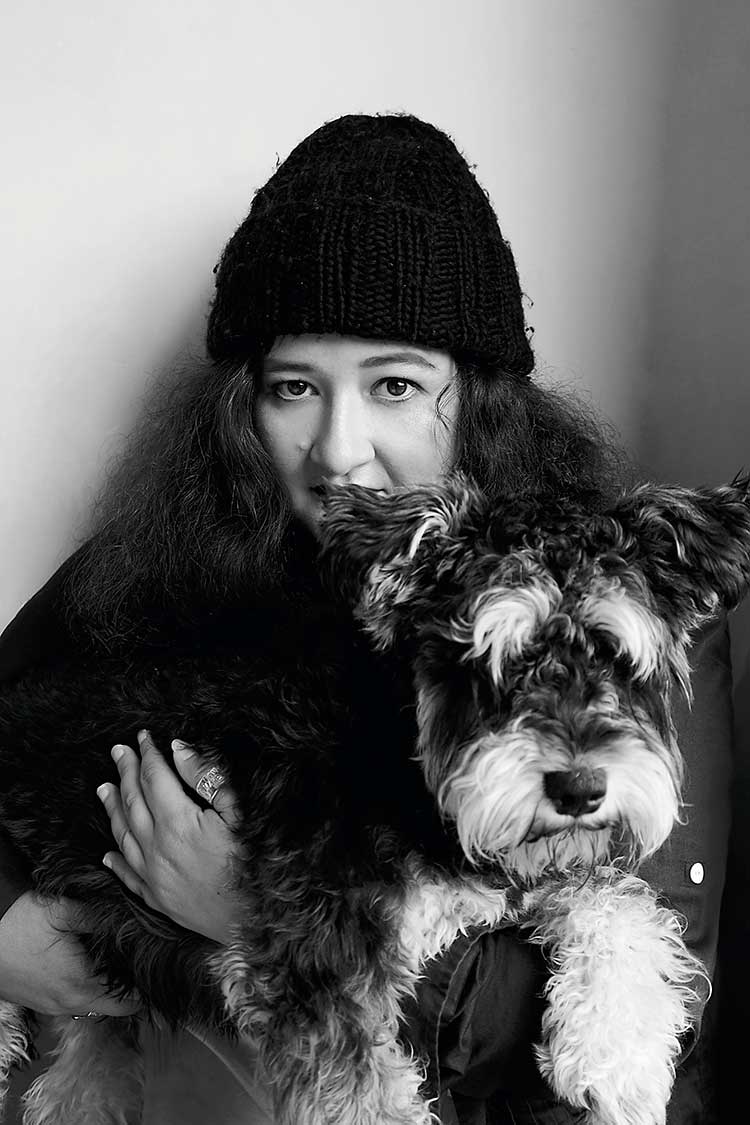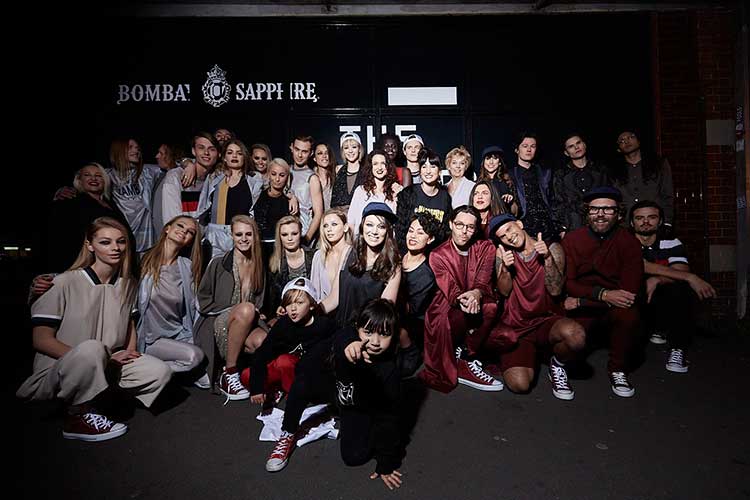
Music might not be the main focus of a fashion show, but an exceptional runway soundtrack can make a collection sing, says Phoebe Watt.
Style is a powerful form of non-verbal communication. “It’s a way to say who you are without having to speak,” said Rachel Zoe. But according to Tom Ford’s go-to music director, Rene Arsenault, if a runway presentation is a 12-minute narrative, the soundtrack is the device that “pushes the plot along”.
Chris Lorimer, director of Auckland-based fashion agency, Ciel PR, certainly agrees.
Having spent many years producing fashion shows for the likes of Cybèle, Company of Strangers, Jimmy D, Julian Danger and Itzme, Chris has come to think of a fashion show’s soundtrack as “an extension of the styling” – something that not only helps to tell the story of a collection, but influences how viewers receive that story. “Do we want them to laugh or cry?” he asks. “The music decides that. It sets the whole pace and feel of the show.”
In his experience, the process of developing a runway soundtrack varies from designer to designer. It’s almost always very collaborative, “but not every designer is musical”, he explains. “Sometimes they’re very unmusical, so they’ll just chuck everything they’ve done at you and say ‘okay, make sense of this’.”

When this is the case, Chris says it’s important to find the show’s “musical keystone”; the one piece of music that best represents the collection thematically. Typically, this track ends up opening or closing the show. Either way, it acts as a starting point from which the rest of the soundtrack can be built.
The task of building a soundtrack is made easier for Chris as he is constantly filing away music. Although he admits that getting stuck in a “music streaming vortex” can become an occupational hazard, he especially likes to feature obscure tracks where he can. Confident that “if people want to follow up on a song they don’t recognise, they’ll Shazam it,” he loves the idea of introducing someone to their next musical obsession and, with any luck, of them forever associating this obsession with his client.
The client always gets the final say, and in some situations personal taste must be put aside. “But it’s not about my personal taste,” insists Chris, “it’s about creating a great show.” While he notes that on occasion, a clash of opinions can lead to a really interesting result, he knows when to let an idea go. “That’s a creative process thing. Everyone working in a creative industry has to learn to give something up if it’s not working.”
Every fashion week, Chris works across multiple shows at once and he’s had to learn how to communicate simultaneously with different clients who are individuals with individual ways of doing things. “Some are really chaotic and some have to be super organised,” he says, “and that’s not just the designers, it’s everyone who has a hand in putting together the jigsaw puzzle of it all. It takes a village to raise a runway.”
Someone who is all too aware of this is Sophie Findlay, daughter of Zambesi founders Liz and Neville Findlay, and soundtrack designer for Zambesi for 15 years. We met at Liz and Neville’s home in Parnell, Auckland, where Sophie and her sister Marissa (who produces Zambesi’s runway shows) also live. With the house doubling as an unofficial Zambesi HQ, I’m told that designer Dayne Johnston is also part of the furniture “and everyone has an opinion”, says Sophie.

Having an opinion is what landed Sophie her role in the first place. She went to film school in 1997, then spent several years making music videos for local hip-hop and R&B label, Dawn Raid Entertainment. “Around that time I started to insert myself into the conversations that Liz and Neville were having about the music and it gradually became something I took over,” she explains.
As hectic as it can be residing at the house of Zambesi, living and breathing the brand makes Sophie’s job easier. She might not see a collection in its entirety until relatively late in the piece, but she’ll know the vibe of it inside out by the time she’s compiling the music. And while all family members, and honorary family members, have their set roles within the business, great ideas are born out of the collaborative environment. The 16-minute long This Mortal Coil track that set the tone for Zambesi’s AW16 show at last year’s NZFW was, for example, an option that Liz proposed from the outset.
Other soundtracks have been entirely Sophie’s concept. Coming up with an idea is never the hard part, it’s convincing Liz and Dayne that the idea makes sense. “There are tracks that I present every single year,” she laughs. “I’ll say to them, ‘are you ready to like this one yet?’.” Such was the case with the Aaliyah playlist for Zambesi’s 2015 Marr Factory show. Sophie waited years for Zambesi to have an Aaliyah moment and when she saw the SS15 collection with its urban aesthetic, she knew the time had come. She agrees that the 90s R&B sound might not have seemed very on brand, “but it was good to do something unexpected and play with people’s perceptions of what they thought Zambesi should be”.

While the informality of Marr Factory shows means Sophie can be playful with her music choices, she says that the NZFW shows will always get the “classic Zambesi” treatment, with music and production that is serious and dark. NZFW also sees Sophie producing soundtracks for the New Zealand Weddings show and the Designer Selection shows, where designers present key pieces from their in-season collections. With these two shows demanding accessible and upbeat soundtracks, Sophie says they compete for songs. “At least with Zambesi there’s no crossover.”
But how much of an issue is crossover? In a 2008 interview, Michel Gaubert, the fashion industry’s most celebrated runway music producer, recalled one fashion week where it was noted that a song he used had been played at another show four days earlier. “I said, ‘did you know Amber Valletta modelled in a show four days ago?’ F***, big deal.”
Chris Lorimer would probably think it was a big deal. “Fashion shows are very formulaic. They always look and act a certain way, so you need a point of difference,” he says. He feels this is what a unique soundtrack can offer, but accepts, too, that what he likes isn’t going to resonate with everyone. “There are certain things that work and certain things that don’t, but beauty is in the ear of the beholder.”










